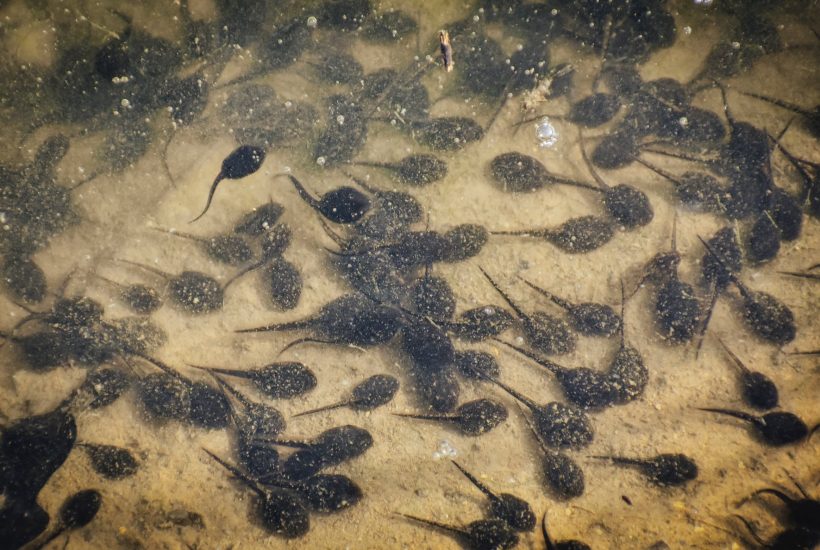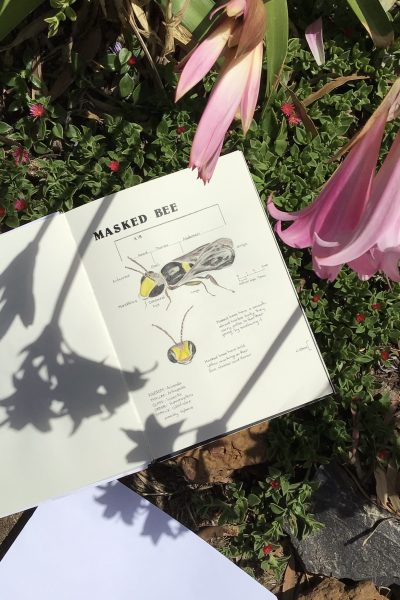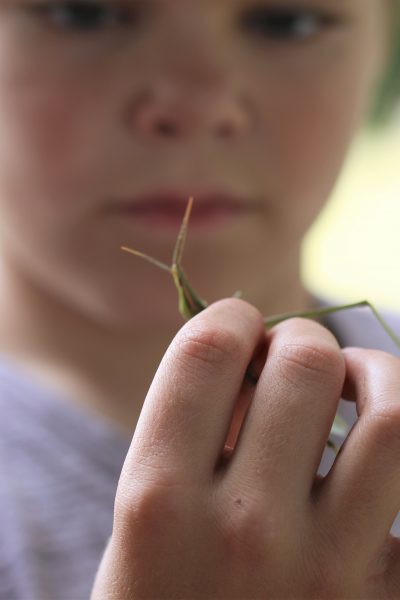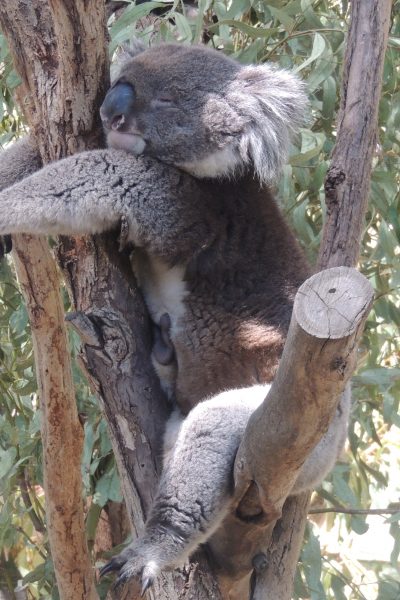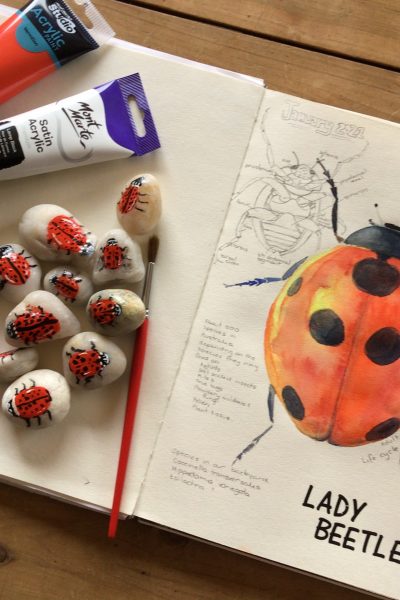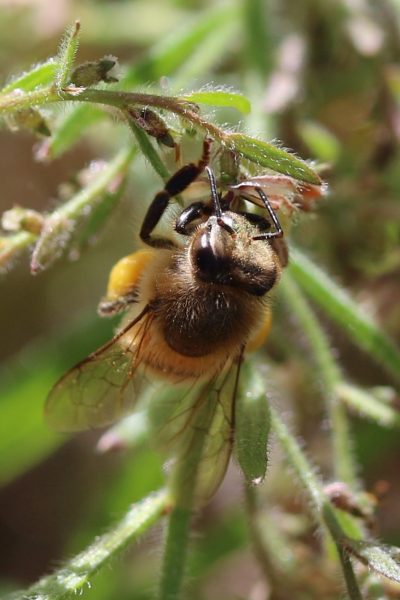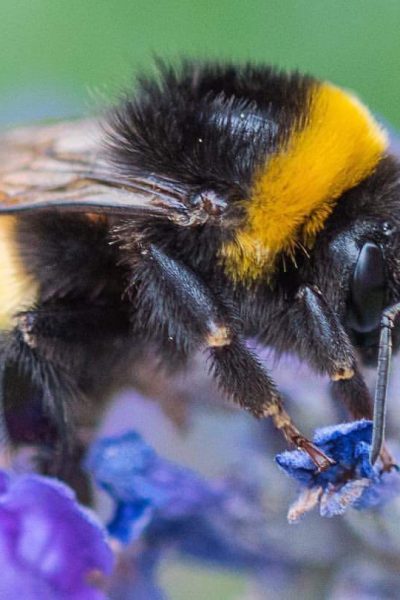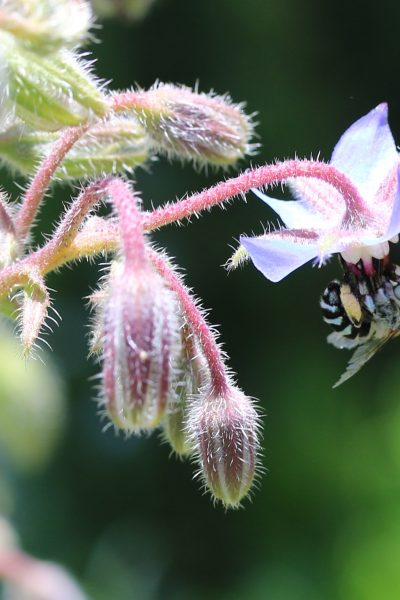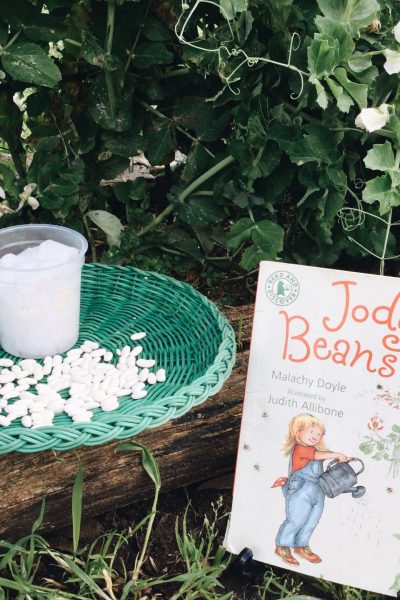Frogs belong to the animal group called Amphibians which means two-lives. First, they live in water and breathe through gills like fish. Then, after a few weeks, the tadpoles slowly begin to metamorphosise and become froglets before completing a full transformation into land and pond living creatures who breathe through their skin. We found the amphibian metamorphosis from tadpole to…
Read More
Let’s do MATH with Native Bees!
Let’s do MATH with native bees!
Grasshoppers
Hello, friend. Did you hear my music? In the summer months, I fill the air with my song, and other insects often join in, creating a marvelous bush orchestra. I’ve noticed your bush boots as you’ve paused to observe insects or one of those nasty beings with wings that frighten me so. You call them birds and I’m sure I’ll…
Read More
Tree Ecosystem Mini Study
In order to be good stewards of our space in the world, we need to understand how living (biotic) and non-living (abiotic) organisms interact with one another. This type of study is known as ecology. It helps us to understand how a population of organisms live with one another within their environment. Trees provide food and shelter to many living…
Read More
Blue-tongue Lizard Mini Study
Blue-tongue lizards love to bake in the sun during the summer months and it’s likely you’ll bump into one on your wanderings. We studied the lizard in Week 2 of the Australian Nature Study Guide | Summer Autumn, and one thing I found interesting, was that they give birth to their young, unlike most lizards that lay eggs. Another interesting…
Read More
Counting Spots
Would you like to be a data collector? Take your magnifying glass and notebook to the garden. Let’s go on a Lady Beetle hunt.
Extraordinary Honeybees
There’s more complexity in the design of a bee than we’ll ever understand this side of heaven. Bees have unbelievable vision which enables them to read and solve colour puzzles. Did you know they can even recognize human faces? Their eyes have been wonderfully designed with 6 300 ommatidia that are capable of telling the difference between 300 separate flashing…
Read More
Honeybee Mini Study
Bees are complex and fascinating creatures that are vital for our survival. They pollinate our vegetable plants, fruit trees and grains. Every year, Apiarists, bring their honeybees to pollinate our grains and fodder crops on the farm. Beekeepers also know which plants and trees are flowering through the seasons and move their hives accordingly. Find out why bees are important….
Read More
Herbs | Borage
Adding Borage to a butterfly or bee garden is a great choice as it attracts pollinators including native bees to your space. It also has the added benefits of repelling pests and being companions to plants like tomatoes and strawberries. Borage is also known as the Bee Bush or Star-flower. I was excited to see Blue-banded bees enjoying the star…
Read More
Come Explore Math by Growing a Bean.
“If you also take a look closer at the patterns of our world you will always reveal the beautiful mathematics.” Ali Kayaspor I love finding books that I can read during our math investigations. Jody’s Beans (by Malachy Dolye) is a very loved book in our house. It is a beautifully illustrated story about a little girl and her discovery…
Read More
Investigating Time
“The child should be taught to observe the position of the sun in the heavens from hour by hour, and by it’s position, to tell the time of the day.” Charlotte Mason – Home Education Hmmm, I know that I can’t tell the time by the sun except maybe a vague, it’s almost dinner time at sunset. What about you?…
Read More
- « Previous Page
- 1
- …
- 6
- 7
- 8
- 9
- 10
- …
- 12
- Next Page »
